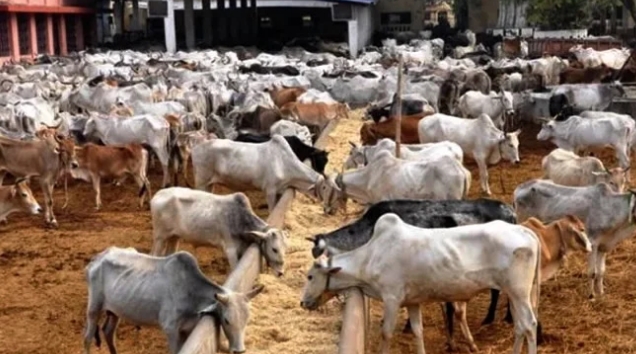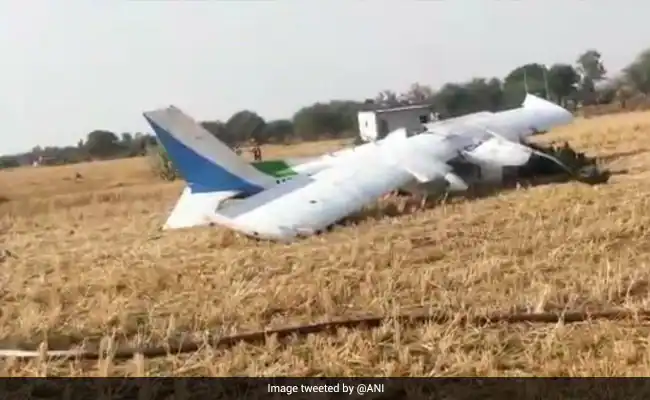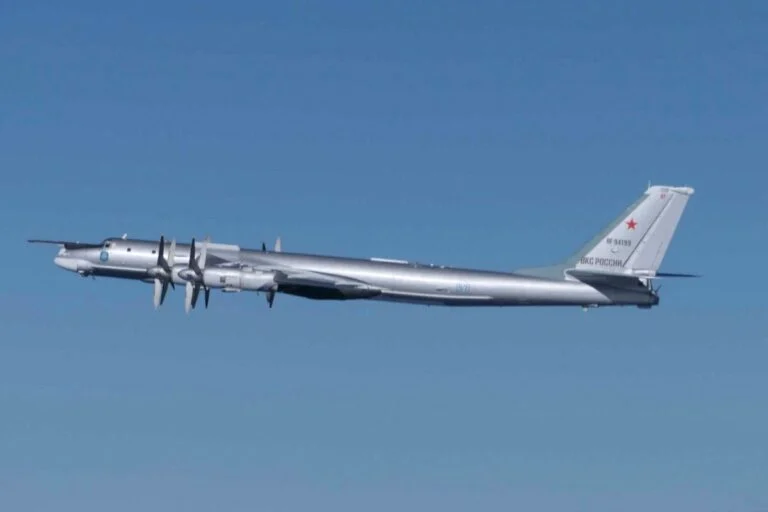Headline
22 Govs Apply As FG Begins Model Ranch Fund’s Disbursement Next Week

No fewer than 22 states have written to the Federal Government to indicate interest in the National Livestock Transformation Programme.
The Senior Special Assistant to the President on Agriculture, Andrew Kwasari, who also coordinates the NLTP, disclosed this in an interview with The PUNCH on Tuesday, adding that the Federal Government would start disbursing funds for model ranches in the next one week.
According to him, states whose governors have written the Federal Government include, Kaduna, Benue, Taraba, Adamawa, Plateau, Zamfara, Kano, Ondo, Katsina, Bauchi, Yobe, Borno, Gombe, Nasarawa, Niger, Sokoto, Ekiti, Kogi, Ebonyi and Kwara.
Following incessant clashes between farmers and herders, the Federal Government in 2018 came up with various ranching models, including Ruga and the NLTP, to settle nomadic herdsmen, who are mostly Fulani.
On Sunday, the President’s spokesman, Garba Shehu, in a write-up in response to a story published by The Economist of London, said the Federal Government’s ranching programme had reduced insecurity in the country in the last 12 months.
He, therefore, urged state governors, who had not embraced the scheme, to do so
Kwasari said, “I have the list of all the governors, who have written to participate in the NLTP. There are 22 governors, who wrote to express interest in the NLTP.
“That is the first condition in the NLTP document. This project is not just something that is done on paper. There are guidelines as approved by the National Economic Council.”
Although he did not specify the amount that would be disbursed, the presidential aide said two of the states, Nasarawa and Plateau, would be getting financial support from the Federal Government for the establishment of model ranches in about a week.
He stated, “In fact, this morning (Tuesday), I was following up with the accountant-general’s office concerning the pilot money to Nasarawa and Plateau.
“We are expecting the Federal Government to credit Nasarawa and Plateau’s accounts; their sites are ready for take-off to build the first ranch and to train pastoralists in how to build ranches.”
READ ALSO: FG’s Stance On Subsidy Enough To Impeach President – Sanusi
Kwasari said Adamawa and Kaduna states were among the 10 states that had established offices and prepared for the programme.
“The government will support them, but they have their own contributions to make. We are also working with the Dutch Government, which has also given some support,” he added.
The presidential aide explained that the model ranches would be used to train pastoralists and help them build their own ranches.
He noted that some people had described the NLTP as another Ruga project.
He stated, “But the bottom-line is that the NLTP is an ecosystem approach. It has six pillars that address all the things that have gone wrong with our livestock production system.
“I just spoke with the office of the accountant-general and by Friday or in a week’s time, I should be able to tell you that the money has been credited to the Nasarawa and Plateau NLTP accounts.
“I will also be able to tell you when work will start on the model projects; to me, that is the most important thing.”
Kwasari added that states like Nasarawa, Adamawa, Plateau, Taraba, Gombe, Kogi, Kwara and Ondo, which had met the NLTP conditions, should be supported by the Federal Government in establishing model ranches.
Asked how much the Federal Government would give as support, he stated, “To build a pilot ranch for the training of pastoralists and crop farmers costs about N400m.
“However, some states have counterpart funding; for instance, Nasarawa has counterpart funding of up to 50 per cent from the Dutch Government. So, to build the ranch and run it for three years will cost about N400m.”
Animals in the ranches will not be allowed to leave the facility all year round, while households will send in representatives, who will be trained in the model ranches in the pilot states.
Kwasari noted that once the pastoralists were able to get feed and water for their livestock, they would have no business moving cattle from one state to another.
READ ALSO: Fr. Mbaka Goofed Over Assessment On Umahi’s Govt – Ebonyi Indigenes
We’ve submitted business plan, says Ondo
When contacted, the Ondo State Government confirmed that it had submitted its business plan to the NLTP.
The Special Adviser to Governor Rotimi Akeredolu on Agriculture and Agric-business, Mr Akin Olotu, said the decision was in response to the Presidency asking the governors to provide land for ranching.
Olotu, however, did not say if the state would give land for ranching or not, but noted that Ondo was waiting for the NLTP’s action on the business plan.
“We have submitted our business plan to the National Livestock Transformation Programme since last year and we are still waiting for action on their part,” he simply stated.
Animal production a private venture – Enugu
But the Enugu State Government said that rearing cattle was a private venture like every other livestock production business.
The state Commissioner for Agriculture, Mr Matthew Idu, stated this in an interview with one of our correspondents.
When asked if the state government would provide land for ranching, Idu asked, “Is it the Federal Government that is rearing the cattle? There are questions you people shouldn’t be asking; cattle rearing is an individual business, just as you have people rearing fish and other livestock.”
Ekiti has keyed into FG’s NLTP – Commissioner
On his part, the Ekiti State Commissioner for Agriculture, Dr Olabode Adetoyi, said the state already had a ranch at Ikun Ekiti in the Moba Local Government Area of the state.
Adetoyi, who said there had been no discussion on the Federal Government’s appeal to states for land, said, “We already have a ranch at the Ikun Dairy Farm. There is no farm without a ranching facility there. For now, that is what we have on the ground.
“We have keyed into the National Livestock Transformation Plan. The Ikun Dairy Farm is the best ranch that any government can have in the country. It is a public-private partnership between the Ekiti State Government and Promasidor, the makers of Cowbell Milk, where we target the production of 10,000 litres of milk per day. At present, we are producing more than 100,000 litres per month.”
Herdsmen should buy land, Delta insists
The Delta State Government says it supports ranching as a panacea for the herders-farmers’ crises in the country.
The state Commissioner for Information, Charles Aniagwu, stated this in an interview with The PUNCH in Asaba.
He said, “Delta is in total support of ranching, but we do not have land to give. Without ranching, there can’t be any reasonable solution.
“Cattle rearing is a private business and anybody who engages in the business should look for land and acquire it.
“It is not the duty of the government to do so. If we begin to get land for cattle rearing, we should also get land for those who are into poultry and other businesses.”
Katsina earmarks 122,000 hectares for cattle grazing
In Katsina State, there are over 122,000 hectares of land for grazing sites out of which 7,000 hectares are currently being utilised for ranching.
It was also found out that ranching was being executed in 10 local government areas of Batsari, Jibia, Kurfi, Dutsin-ma, Safana, Danmusa, Kankara, Faskari, Sabuwa and Dandume.
Oyo rules out building ranches for herders
The Chief Press Secretary to the Oyo State Governor, Taiwo Adisa, stated that the anti-grazing law enacted by the Seyi Makinde administration would strictly guide livestock production in the state.
READ ALSO: E-Naira: 12 Things To Know About Nigeria’s First Digital Currency
He stated, “Oyo State has an anti-open grazing law, which was signed into law in 2019. This has comprehensively spelt out the processes for the establishment of ranches by any intending livestock farmer.
“The Oyo State anti-open grazing law sees ranching as a personal business. Herdsmen are free to apply for land for that purpose.
“The disposition of the Oyo State Government is not in support of giving land for grazing reserves. The grazing control law does not give land, but for the herder to rent and renew land at intervals. The landowner too cannot sell land to any herdsman.”
By Okechukwu Nnodim, Peter Dada, Abiodun Nejo, Raphael Ede, Matthew Ochei, Olaide Oyelude and Olufemi Olaniyi.
(PUNCH)
Headline
Aircraft Crashes In Owerri With Four Persons Onboard

A Cessna 172 aircraft with registration number 5N-ASR, operated by Skypower Express, has crashed at the Sam Mbakwe International Cargo Airport, Owerri, Imo State.
The aircraft had departed Kaduna International Airport en route to Port Harcourt International Airport before diverting to Owerri after the crew declared an emergency.
The crash occurred at about 8:00 pm on the airport premises, with four passengers and crew members onboard.
Confirming the incident, the Director, Public Affairs and Family Assistance of the Nigerian Safety Investigation Bureau (NSIB), Mrs. Bimbo Oladeji, said the agency had been notified of the crash.
READ ALSO:Social Media Feud Spills Into Aircraft As VDM, Mr Jollof Exchange Blows
According to the NSIB, the aircraft crashed on the approach area of Runway 17, but no fatalities have been recorded so far.
The statement said: “Following the occurrence, airport emergency services were successfully activated and arrived on site promptly. Reports indicate that there was no post-crash fire, and the runway remains active for flight operations, with other aircraft taking off safely after the incident.
“Efforts are currently underway to coordinate the recovery and evacuation of the distressed aircraft from the crash site to allow for a detailed wreckage examination.”
The NSIB said it has officially activated its investigation protocols in line with its statutory mandate
READ ALSO:Ogun To Prosecute DJ Over Multiple Road Crashes
The Director-General of NSIB, Capt. Alex Badeh Jr., sympathised with the management of Skypower Express over the incident and expressed relief that no lives were lost.
Badeh Jr. added that the Bureau’s investigation team is already coordinating with relevant authorities to secure the crash site and commence a detailed investigation into the cause of the accident.
Two days ago, 11 persons narrowly escaped death as a private jet crash-landed at Mallam Aminu Kano International Airport, Kano, on Sunday morning.
The occupants, including passengers and cabin crew, were safely evacuated amid an intense atmosphere, eyewitnesses told The Guardian.
READ ALSO:Tanker Crash Kills Three, Fire Razes Shops In Kano
The private jet, owned by Flybird Aviation, crash-landed at about 9:30 a.m. while approaching Kano Airport en route to Abuja.
The incident attracted urgent attention, with emergency staff and other stakeholders converging at the runway to render rescue operations.
The management of the Federal Airports Authority of Nigeria (FAAN) is yet to release an official statement on the incident. Unofficial sources disclosed that the passengers have been taken to an unknown destination.
Several aircraft incidents have occurred at Kano Airport, with several lives lost.
The last incident occurred in May 2002, when an EAS Airline aircraft departed the runway at Aminu Kano International Airport at 1:29 p.m. local time en route to Lagos.
Headline
Musk Breaks Record As First Person Worth Over $600 Billion

Elon Musk, Chief Executive Officer of SpaceX, Tesla, and xAI, has reached a new personal wealth milestone, surpassing a net worth of $600 billion, driven primarily by a recent valuation increase of SpaceX.
The development makes Musk the first individual in history to exceed the US$600 billion threshold.
According to Bloomberg’s Billionaires Index, Musk’s net worth stood at approximately $638 billion as of 15 December 2025, with the increase largely attributed to SpaceX, which was recently valued at around $800 billion following an insider share sale.
The privately held aerospace company, based in Starbase, Texas, is now considered the most valuable private firm globally, significantly boosting Musk’s personal holdings.
READ ALSO:Elon Musk Joins ‘Cancel Netflix’ Campaign
Musk’s stake in Tesla, estimated at roughly 12 per cent, is valued at nearly $200 billion, while his majority ownership of xAI Holdings is estimated at $60 billion.
Collectively, these assets place him on track to potentially approach US$700 billion, widening the gap between him and the world’s second-richest individual, former Google CEO Larry Page, valued at $265 billion.
The SpaceX valuation comes ahead of a projected public listing in 2026, which could see the company valued at approximately $1.5 trillion.
“Other shareholder meetings are snooze-fests but ours are bangers. Look at this. This is sick,” Musk said in November during Tesla’s shareholder meeting, referring to a performance-linked pay package approved by investors.
READ ALSO:EU Fines Elon Musk’s X €120m For Violating Digital Content Rules
He added, “I super appreciate it.” The package, potentially worth up to US$1 trillion in stock, is tied to market-capitalisation and operational milestones over the next decade.
SpaceX’s Starlink satellite network has also contributed to investor confidence. The company continues to expand high-speed internet access to underserved regions worldwide.
Chad Gibbs, Vice President of Starlink Operations, stated that the satellite technology “bypasses the need to build massive amounts of infrastructure,” allowing broader and faster connectivity.
Musk’s ascent in personal wealth follows years of strategic risk-taking and long-term planning, with Tesla’s focus on electric vehicles, battery technology, and autonomous systems laying the foundation for his financial growth.
Analysts note that the combination of SpaceX’s soaring valuation, Tesla’s long-term incentives, and Musk’s diverse portfolio underpins his current status as the world’s wealthiest individual.
Headline
South Korea, Japan Protest China, Russia Aircraft Incursions

South Korea and Japan reacted furiously on Wednesday after Chinese and Russian military aircraft conducted joint patrols around the two countries, with both Seoul and Tokyo scrambling jets.
South Korea said it had protested with representatives of China and Russia, while Japan said it had conveyed its “serious concerns” over national security.
According to Tokyo, two Russian Tu-95 nuclear-capable bombers on Tuesday flew from the Sea of Japan to rendezvous with two Chinese H-6 bombers in the East China Sea, then conducted a joint flight around the country.
The incident comes as Japan is locked in a dispute with China over comments Prime Minister Sanae Takaichi made about Taiwan.
READ ALSO:China Backs Nigeria, Warns Against Foreign Interference
The bombers’ joint flights were “clearly intended as a show of force against our nation, Defence Minister Shinjiro Koizumi wrote on X Wednesday.
Top government spokesman Minoru Kihara said that Tokyo had “conveyed to both China and Russia our serious concerns over our national security through diplomatic channels”.
Seoul said Tuesday the Russian and Chinese warplanes entered its air defence zone and that a complaint had been lodged with the defence attaches of both countries in the South Korean capital.
“Our military will continue to respond actively to the activities of neighbouring countries’ aircraft within the KADIZ in compliance with international law,” said Lee Kwang-suk, director general of the International Policy Bureau at Seoul’s defence ministry, referring to the Korea Air Defence Identification Zone.
READ ALSO:Trial For South Korean Woman Accused Of ‘Suitcase Murders’ Starts Today
South Korea also said it deployed “fighter jets to take tactical measures in preparation for any contingencies” in response to the Chinese and Russian incursion into the KADIZ.
The planes were spotted before they entered the air defence identification zone, defined as a broader area in which countries police aircraft for security reasons but which does not constitute their airspace.
Japan’s defence ministry also scrambled fighter jets to intercept the warplanes.
Beijing later Tuesday confirmed it had organised drills with Russia’s military according to “annual cooperation plans”.
READ ALSO:South Korean Actress Kim Sae-ron Found Dead In Seoul Apartment
Moscow also described it as a routine exercise, saying it lasted eight hours and that some foreign fighter jets followed the Russian and Chinese aircraft.
Since 2019, China and Russia have regularly flown military aircraft into South Korea’s air defence zone without prior notice, citing joint exercises.
In November last year, Seoul scrambled jets as five Chinese and six Russian military planes flew through its air defence zone.
Similar incidents occurred in June and December 2023, and in May and November 2022.
READ ALSO:Russia Insists Ukraine Must Cede Land Or Face Continued Military Push
Meanwhile, Tokyo said Monday it had scrambled jets in response to repeated takeoff and landing exercises involving fighter jets and military helicopters from China’s Liaoning aircraft carrier as it cruised in international waters near Japan.
It also summoned Beijing’s ambassador after military aircraft from the Liaoning locked radar onto Japanese jets, the latest incident in the row ignited by Takaichi’s comments backing Taiwan.
Takaichi suggested last month that Japan would intervene militarily in any Chinese attack on the self-ruled island, which Beijing claims as its own and has not ruled out seizing by force.
AFP

 Metro2 days ago
Metro2 days agoSuspected Kidnappers Abduct 18 Passengers On Benin-Akure Road

 News2 days ago
News2 days agoEdo Assembly Charges Contractor Handling Ekekhuan Road To Accelerate Work

 Sports21 hours ago
Sports21 hours agoJUST IN: Dembélé Named FIFA Best Men’s Player, Bonmatí Wins Women’s Award

 News2 days ago
News2 days agoI’m Not Distracted By Anti-Niger Delta Elements, Says PAP Boss, Otuaro

 News2 days ago
News2 days agoOPINION: Time For The Abachas To Rejoice

 Metro2 days ago
Metro2 days agoNDLEA Seizes 457kg of Cannabis, Arrests Suspected Trafficker In Edo

 News20 hours ago
News20 hours agoWage Dispute: Court Orders PSG To Pay Mbappe €61 Million

 Business19 hours ago
Business19 hours agoCBN Revokes Licences Of Aso Savings, Union Homes As NDIC Begins Deposit Payments

 News2 days ago
News2 days agoOkpebholo Pledges To Clear Inherited Salary Arrears, Gratuities At AAU

 News2 days ago
News2 days agoEx-Nigerian Amb., Igali, To Deliver Keynote Address As IPF Holds Ijaw Media Conference
































